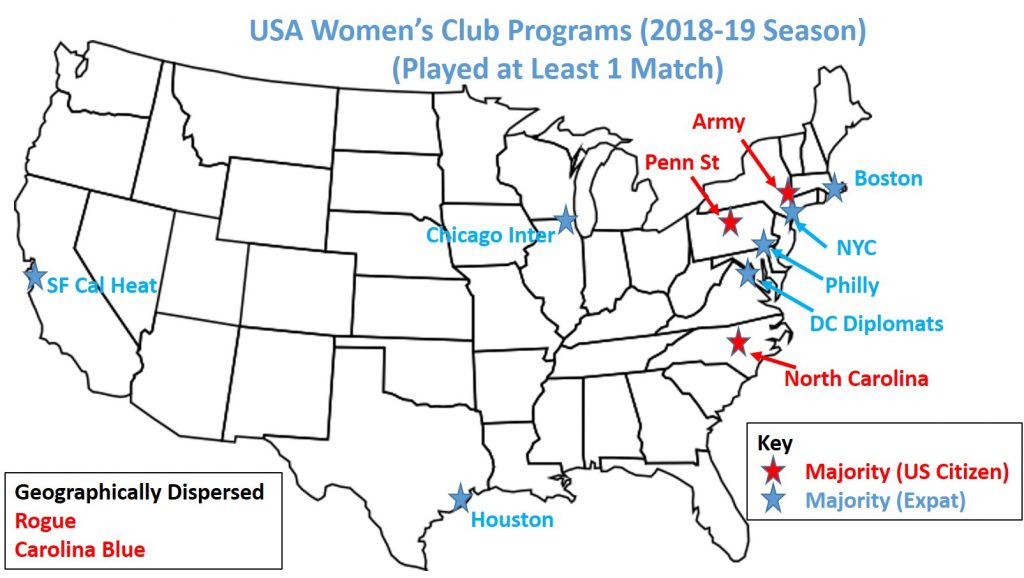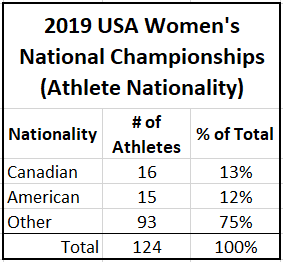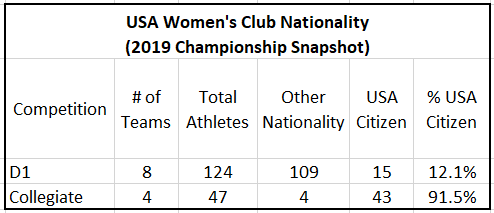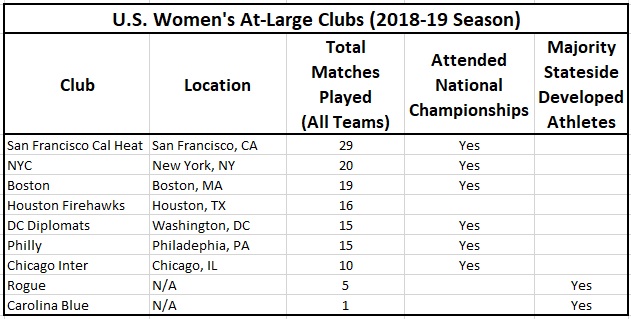
Note: This is part of an ongoing series, Charting a Way Forward for USA Team Handball (2019 Reboot): Link
Parts 1 and 2 of my review of U.S. clubs focused on Men’s clubs. Part 3 looks at our Women’s Club Programs.
USA Women’s Clubs: A Small Footprint
As a reminder here are the U.S. demographics from an earlier installment of this series.


Breaking this down further there are around 150-200 female handball athletes playing club handball in the U.S. And, of that 150 – 200 there are perhaps 60-80 that are American citizens.
The tables below (and the map above) further break down the Women’s club program in the U.S. that played at least 1 match last season.


The demographics are similar to the Men with most of the teams being expat majority except for collegiate clubs and a couple of geographically dispersed clubs (Rogue and Carolina Blue).
While similar, however, the overall total numbers of clubs are lower. Last season there were a total of 36 Men’s clubs that played at least 1 match (At-Large (21) and Collegiate (15)]. For the women, there was only a total of 12 clubs [At-Large (9) and Collegiate (3)].
Why Fewer Women’s Clubs?: Less Interest and…Surprisingly, More Opportunity (in Relative Terms)
An earlier article highlighted some of the inherent challenges with developing women’s handball. Those challenges include handball not being a “school sport”, a smaller pool of interested athletes (relatively to men).
This less relative interest is manifested in two ways. Overall, there are fewer women interested in playing sports competitively. Anecdotally, I think most people will agree this true, but there are also several studies that back up this view. For grades 3-12 roughly 8 million girls participate in organized sports compared to 12 million boys. I would suspect that these rates of participation continue in older ages and may even increase. Meaning all things being equal there are fewer women interested in playing a club sport like handball.
But, I would argue that when it comes to club sport’s interest in college all things are not even equal. And, this is somewhat bizarrely due the great equal opportunity requirements of Title IX which mandates equal participation rates for men and women. It hasn’t been fully realized, but the number of scholarship and participation opportunities for women is roughly the same as it is for men. Meaning that in relative terms NCAA collegiate scholarships for established sports dig deeper into the smaller women’s pool of available talent. This, in turn, leaves fewer women athletes left looking for a sports club outlet and the raw talent of those athletes also being somewhat lower.
So, with these handicaps it shouldn’t be a huge surprise that there are fewer women’s clubs, both with At-Large Clubs and Collegiate Clubs
This concludes the review of the demographic numbers for U.S. Clubs. Part 4 addresses some of the “why” behind these demographics. In particular, why clubs in the U.S. tend to be majority Expat.